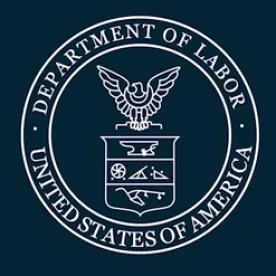Last week (on July 15, 2020), the U.S. Department of Labor’s Women’s Bureau issued a Request for Information. According to the request, the Bureau is asking workers, employers, researchers and stakeholders to provide “comments, information, and data . . . on a number of paid leave topics, including the effectiveness of current state- and employer-provided paid leave programs, how access or lack of access to paid leave programs has impacted women and their families, and challenges faced by employers.” The Bureau states that it will use this information to “help the Department identify promising practices for models of existing paid leave programs.”
On the very next day (July 16, 2020), the U.S. Department of Labor’s Wage and Hour Division (WHD) issued a Request for Information of its own: this one seeking comment and information from the public concerning the effectiveness of the current regulations associated with the Family and Medical Leave Act (FMLA), in particular with respect to the definition of serious health condition, the use of intermittent leave, employee notice when taking FMLA leave, and employer-required certification of an employee’s serious health condition. The WHD’s RFI follows on the heels of the Division’s recent update to optional-use FMLA forms: Form WH-381 (eligibility and rights and responsibilities notice), Form WH-382 (designation notice), Form WH-380-E (employee’s serious health condition) and Form WH-380-F (family member’s serious health condition).
These types of requests for public comments have previously led to agency regulations. For example, in July 2017, the DOL’s Wage and Hour Division sought comments on the overtime exemptions under the Fair Labor Standards Act. Over 200,000 comments were received. After their review, the Wage and Hour Division issued new salary regulations in September 2019.
Because the Bureau does not have the authority to issue or enforce regulations, one might not expect its RFI to lead to specific regulations. However, because that RFI was immediately followed by another RFI on the same general topic (the FMLA) from the agency responsible for issuing and enforcing regulations on the FMLA, it is likely that some changes are certain to come. Whether those changes will involve mandatory pay requirements – as suggested by the Bureau’s RFI – is to be seen. The most recent federally required pay for such leave occurred in September 2015, when then-President Obama exercised his executive authority to issue Executive Order 13706, which mandated that all federal contractors provide paid sick leave to their employees.
The fact of the matter is the United States is among the very few countries that do not yet require employers to provide paid sick leave or some form of similar paid leave. According to a March 2020 article published by The World, public radio’s longest-running daily global news program, in March, near the onset of the COVID-19 pandemic in the United States, approximately 93% of the world’s 193 countries (that is – 179) had mandatory paid sick leave for employees. The concept of some form of paid leave requirement has been introduced in Congress on a repeated basis in recent years (approximately a half-dozen such bills were introduced in 2019 alone), and the number of states that have some form of paid leave requirement seems to be growing annually – with the count at eight, plus the District of Columbia as of July 1. (Approximately 20 other states had proposed paid leave laws introduced in their respective legislatures over the past two years.)
For the first time, the U.S. Congress did, in fact, pass a law, the Coronavirus Aid, Relief, and Economic Security (CARES) Act, requiring all (not just federal contractors) employers with more than 50 and fewer than 500 employees to provide paid leave – though it took a pandemic to get there. With infection rates associated with COVID-19 continuing to climb, and the continuing challenges being faced by working families throughout the country (not the least of which is the availability of adequate child care), it does not take a terribly imaginative mind to foresee the real possibility of the CARES Act paid leave provisions either extending beyond December 31 on a temporary – or, depending on what happens in the November elections, - a permanent basis.
If so, we may look back at the U.S. Department of Labor’s Women’s Bureau’s initial Request for Information, made during the Bureau’s 100th Anniversary Year, as the precursor to that occurrence. This may be even more likely if the administration in Washington changes after the upcoming November 3 election.




 />i
/>i

